The exhibition of graduate work starts a new cycle of exhibitions at ÉSAD Orléans for the 2021-2022 school year. The title, Search Bar, in French “Barre de recherche”, is an invitation to share some facets of research in art and design as it now stands in our school and beyond.
The previous cycle of exhibitions, Uncool Memories, born in the context of the COVID-19 pandemic, reminded us of how being able to show work is absolutely vital for artists or designers. It is not only for graduates to gain visibility but also (and especially) to keep track of research. This interval calls to write a new phase in the life of those who were still students a few weeks ago. It is only through sharing the other’s sensitivity, looks, words and intellectual exchange that this new phase of artistic and creative research can be forged.
Whether the research is personal, collective, collaborative or falls within the four programmes of the school research unit (l’ECOLAB), it is always in art and design, interacting with its time. Thus, the 2021 graduates embody design in response to current topics, spanning our digital environment, which seems to greatly depend on our social, economic, political and private life today. In the students’ work, we understand how it touches reading, writing and the way children see; it influences our representation of time and space, our landscapes, forms, data culture, our live and read-only memory. Henceforth, sounds, images, texts, objects and bodies register in the same way. The projects which create a dialogue between music and graphic design, image and code, perception and action, interaction and performance, clearly demonstrate this. In an effort to not give into the world of the past, the projects tackle the ecological transition. They also deal with the political questions which lie in the heart of typography.
Works Exhibited
Inhabiting the world / Lucie Bretonneau
Impression of a fresco on water-repellent material, eyelets and ropes
As part of her diploma, Lucie Bretonneau has tried to unite children with adults in front screens in order to bring back sharing and connections in the family. By placing a screen in the centre of a federating device, manipulated with the support of an adult, the child builds a story.
The project Inhabiting the world brings together the hut peculiar to children’s imagination and the cell phone as a support for a narrative and relational object. This device is composed of two layers : first a printed object with a painted fresco inspired by children’s stories and secondly four motion videos in augmented reality triggered by a mobile app. The resulting manipulations allow to make a stepping stone between the printed object and the virtual object in a same space.
Starting from the idea that children have their own vision of the world and are hungry for knowledge, Lucie Bretonneau has imagined different storylines allowing to not only set off questions but also play with various dimensions of the physical world in order to initiate a dialogue with a close relation and generate interactions between generations. Looking at the world with the eyes of a child is something that we tend to forget when growing up, and understanding the multiple universes of this world requires being accompanied. This editorial device offers all ages to contemplate the world differently.

Linear Silver Photographic Essay n°2 / Hugo du Roure
Silver photography
Linear Silver Photographic Essay n°2 results from an experimental silver photographic technique developed by Martin Liebscher consisting in manually scrolling the photosensitive film in the open camera shutter.
This process creates kinds of panoramic images when moving at the same time as activating the device. Fixed elements are distorted by the movement we produce and mobile elements confront the shooting. The elements from the environment are mixed up and become abstract, the image is blurred by the movement. The emerging out of focus feature reinforces the impression of long life and combines the movement of the eye, body and shifting environment on a single support.
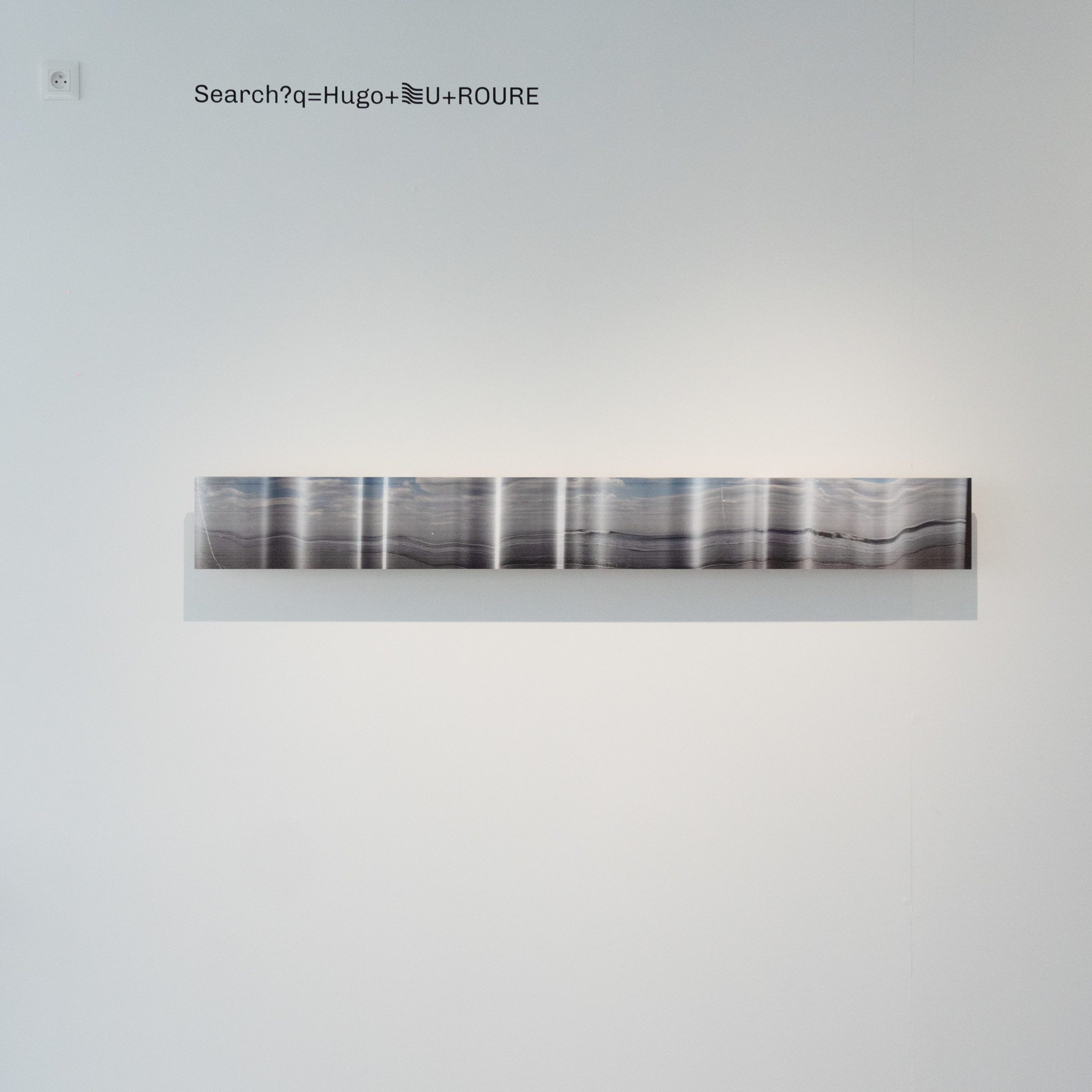
Codes signs weapons
Des codes des signes des armes / Éléonore Fines
Code, typography, graphic design
How can typography act as a weapon in contemporary fights? Eléonore Fines looks into typography and the stakes linked to individual freedom. A vector of communication when it is considered as a tool, the accessibility and readability of typography are the determinants of efficiency in transmitting the message. Starting from the idea that typography can be a medium, which according to McLuhan, is also a message, Eléonore Fines demonstrates that the objective use of a typography is difficult to accept, just as a graphic design which would be considered as neutral. Today, typography is an area for collective creation of social order, which gives the power to intervene on thoughtforms. It can be a “weapon”, both for representing ideas and inventing a citizens’ script. It should be the responsibility of the graphic designer to free themselves from the sometimes oppressive, preset systems of creation and reflection. The second aspect of her research deals with the connection between cryptography and typography. How can we communicate in a covert manner? Why? For whom? For which message and what for? How can typography become cryptography? How can a secret be associated with transparency without compromising the intention of a specific message? The dream of a resistance…
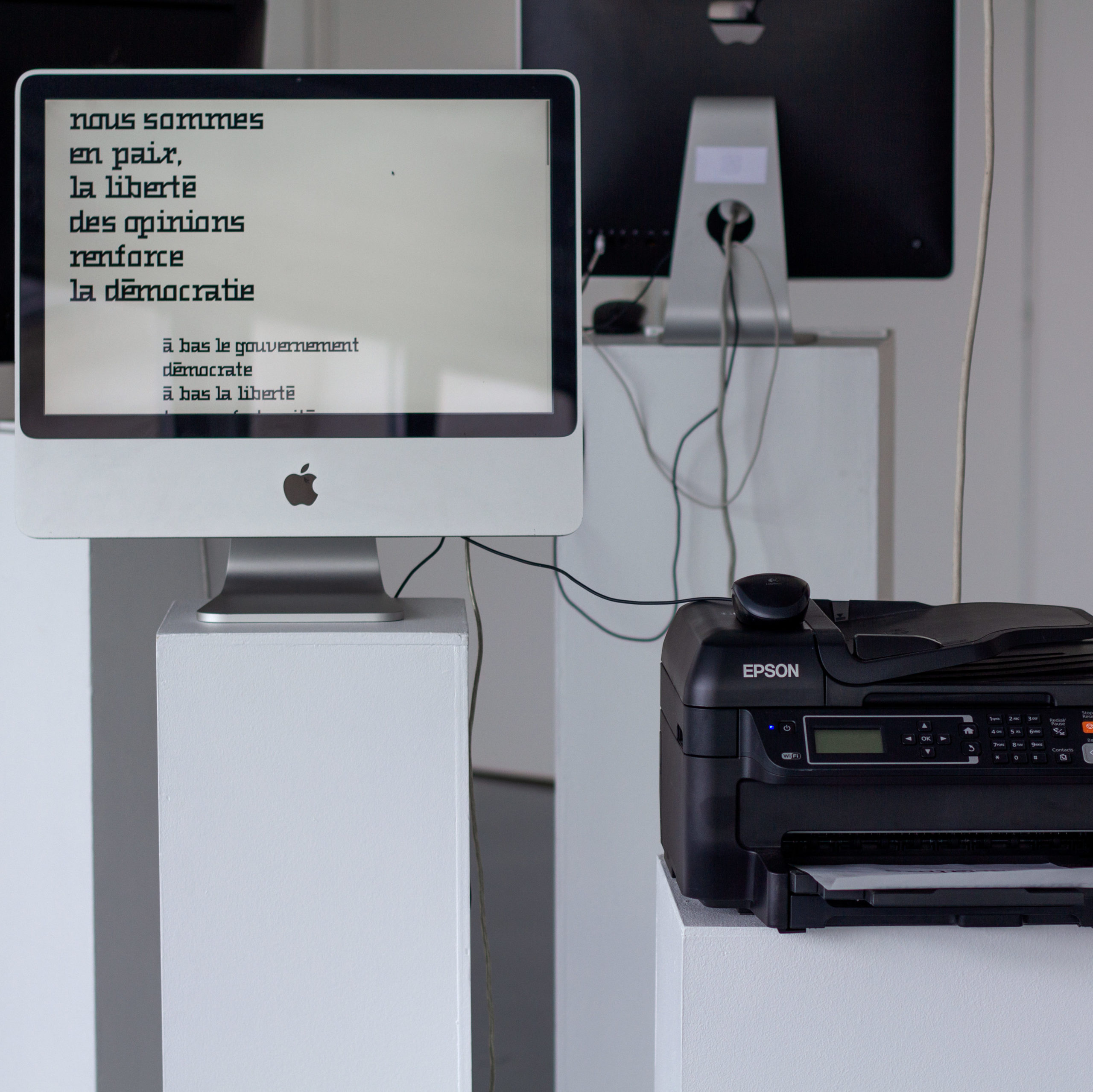
Animated modular poster – “K” / Nicolas Lemaitre
6 videos with sound, 6 ipads (8th génération)
As part of his research, Nicolas Lemaitre deals with the relation between music and graphic design, in particular its expression in the field of typographical design.
His research focuses on the drawing of letters for which he formulates the hypothesis of a ‘“musical typography”. Starting from a collection of 68 drawings produced during long listening sessions, he has devised a modular (typo)graphic system around the idea of rhythm, presented here in the form of an installation. Six screens show one module which allows to better comprehend the idea of a typographical construction grid.
Animated modular poster – “K” has been thought out both as a pedagogical accompaniment as well as an autonomous sound installation.

Coloured Essence / Alice de Oliveira Reis
Laser print and weaving
The diploma project « Borskian Variations » starts with Alice De Oliveira Reis departing for an Erasmus course in Borska, in the Czech Republic in 2020. One month after arriving, cooped up in her room because of the lockdown, with borders closed, alone, not speaking Czech nor understanding what was happening, her main occupation became observing the landscape and the factory she could see through the window. Whatever the weather, the factory was always there, smoking. She gazed at it for five months. Its presence was reassuring like a friend’s. By the shape of its smoke, Alice could imagine its state, if it was sick, tired, happy… She photographed it several times a day to capture all these changes..
With « Borskian Variations », Alice De Oliveira Reis shares this period of fascination and contemplation, looking to reveal the aesthetics, immediacy and transience of ‘her’ factory, its smoke and the weather. Sharing how it became ‘her world’. The project “Coloured Essence” seizes the essence of the image, what it is made of. Through a work on deconstruction and weaving, the elements of the landscape tend to fade and give way to colours and all the shades making up the image.
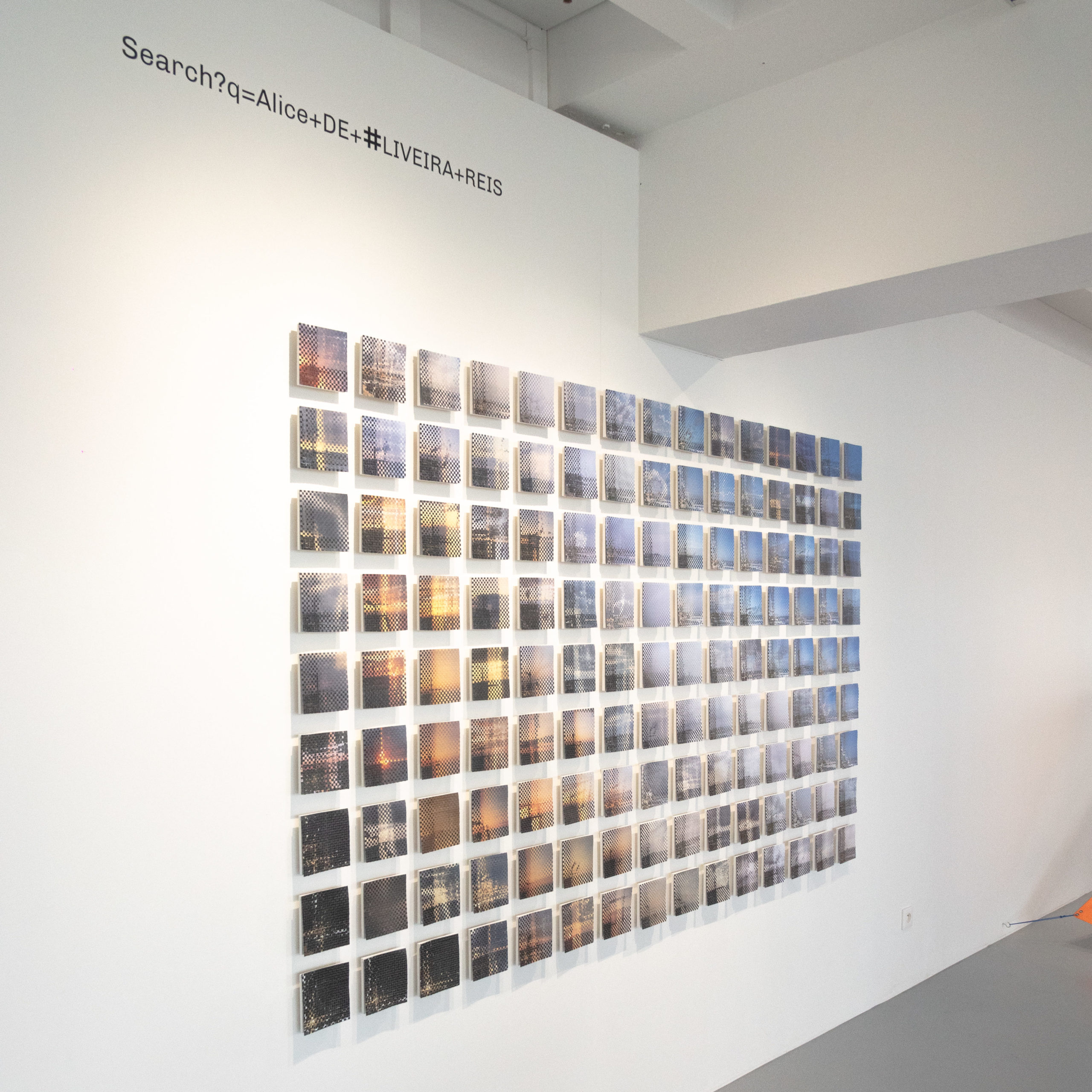
A proposal for life in a flat world / Yen Chen Lin
Polycarbon plastic, wood, aluminium
Yen Chen Lin reflects on the new forms of social interaction. A proposal for life in a flat world therefore answers to contemporary core issues : how to live together and how to address environmental challenges. Today, with a tide of images and unremitting messages, platforms and social networks capture our attention, arousing our desire to consume products which they also tend to standardize. Yen Chen Lin’s objects try to re-establish a link between the object and our sensitivity and reconcile individual desire with the idea of living together. In other words, it concerns knowing how to respond to our many and varied desires without giving in to the logic of mass consumption.
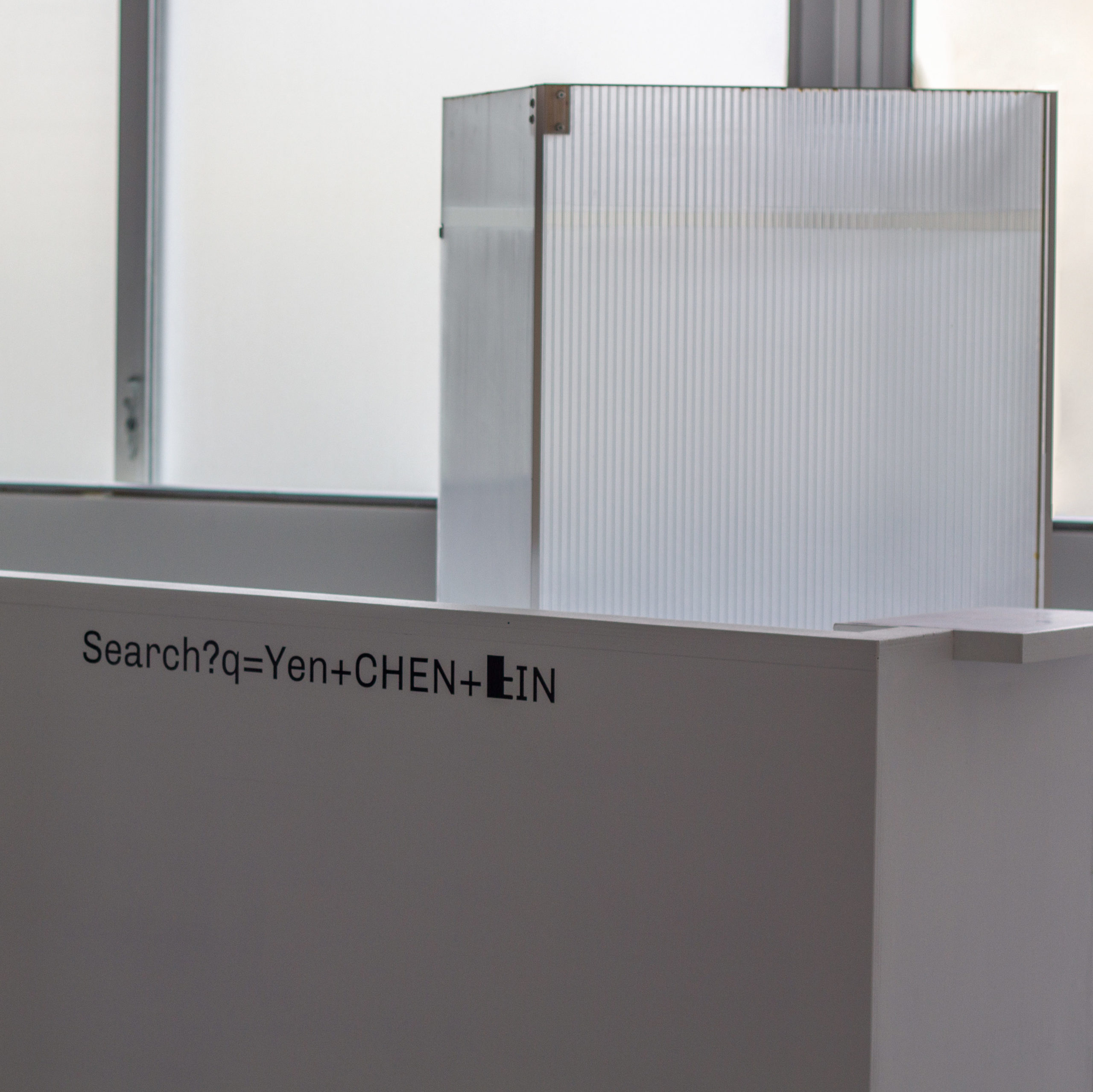
Daedalus / Amélie Samson
Indian ink on embossed paper
Daedalus is a project on web landscapes. The web is often considered as a labyrinth, a rhizome or a network, a shifting structure without an entrance or exit. To avoid getting lost in it, artificial ‘intelligence’ has created personalised profiles fed with the analytical data of our behaviour. Algorithms propose calculated paths, build our palaces, prisons, our digital cocoons whose purpose is to reduce our wandering while always providing the right information.
One possible etymology of labyrinthe is “labirion”, which designates an underground tunnel. How can we not think of the Myth of the Minotaur? This labyrinth, tailor-made by Daedalus, isn’t only the monster’s palace, or prison, it’s also its tomb. Indeed, there it dies, killed by Theseus. Similarly, algorithms control potential paths, mathematically define the walls of our labyrinths, within which our tracks accumulate, and where we dig, to our image, the sanctuary of our digital death, the landscape of our digital life.
How is it possible to make apparent this landscape ploughed by our successive web browses? Amélie Samson’s project aims to draw data-visualisations with the help of the classical Indian ink wash-drawing technique. Embossing gives the key. Thus, on 26 May 202à, the Google.com page was visited 31 times, so 31 coats were superposed, or 31 layers of ink to make this profile.
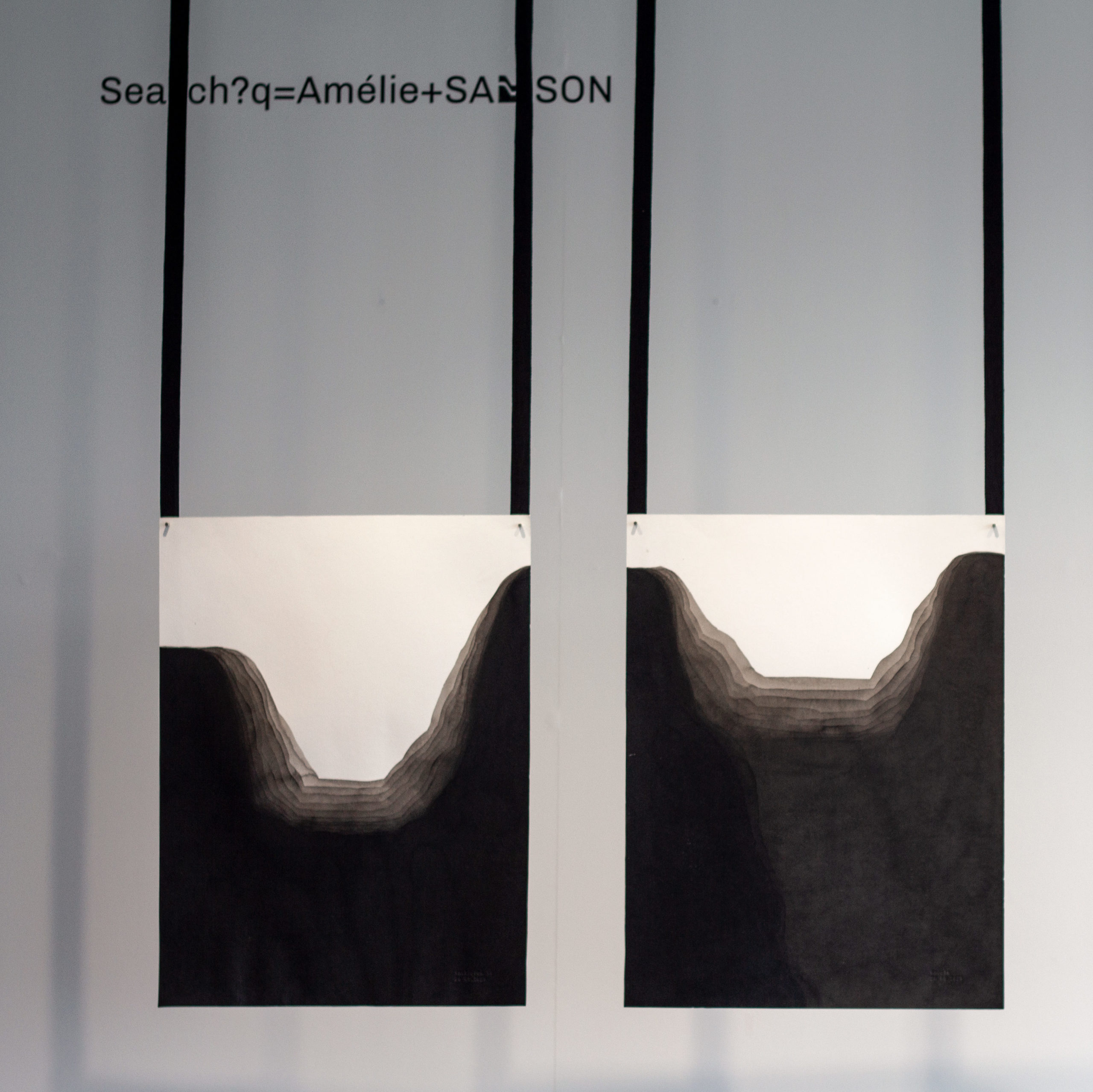
PLA, stoneware
Dataglyphe.zip is a collection of ceramic data-sculptures embodying a text as a whole. Each volume gives access to an excerpt. A quick scan of one of the sculptures by means of a smartphone with NFC technology, gives access to the text on the Web. This project re-engages with material archives by establishing a passage from the space of the object towards a network. The given form of the material is generated by textual data. Thus, the text informs and forms the sculptures.
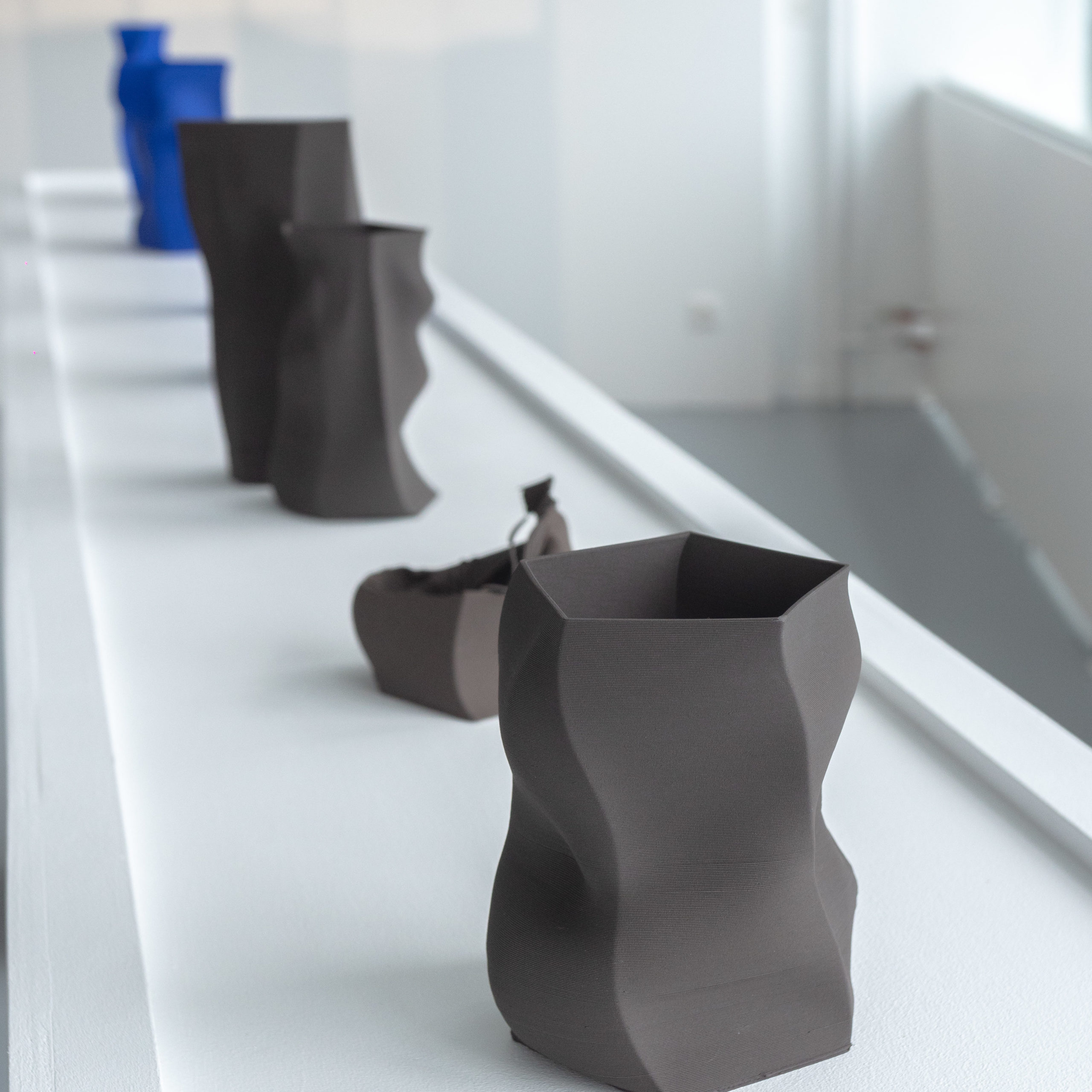
Practical Information
Exhibition from 8 to 19 September 2021
Galerie de l’ÉSAD
14 rue Dupanloup – 45000 Orléans
Monday to Friday 10.00 a.m. to 8.00 p.m.
Open on Saturday 11,18 and Sunday 19 September from 2.00 to 6.00 p.m..
Extended opening hours Friday 17 to 9.00 p.m.
Free access on presenting the sanitary pass
With Lucie Bretonneau, Alice De Oliveira Reis, Hugo Du Roure, Eléonore Fines, Nicolas Lemaitre, Yen Chen Lin, Amélie Samson, Eva Vedel
Scenography : Olivier Bouton
Coordination : Catherine Bazin
Tutors : Lionel Broye, Emmanuel Cyriaque, Sylvia Fredriksson, Maurice Huvelin, Didier Laroque, Gunther Ludwig, Uli Meisenheimer, Sophie Monville, Nicolas Tilly, Caroline Zahnd
Executive Management : Emmanuel Guez
Studies Manager : Juliette Beauchot
Patronage and Communication : Aymeric Chapell
Graphic Design : Nicolas Lemaitre
Technical Workshops : Stéphane Bérard, Marlène Bertoux, Clémence Brunet, Stéphane Détrez, Madi Kassay, Paul de Lanzac, Camille Legriffon, Virginie Péchard, Thierry Vivien, Marek Zaroslinski.
Technical service : Michaël de Looze, David Jugi, Stéphane Parrod